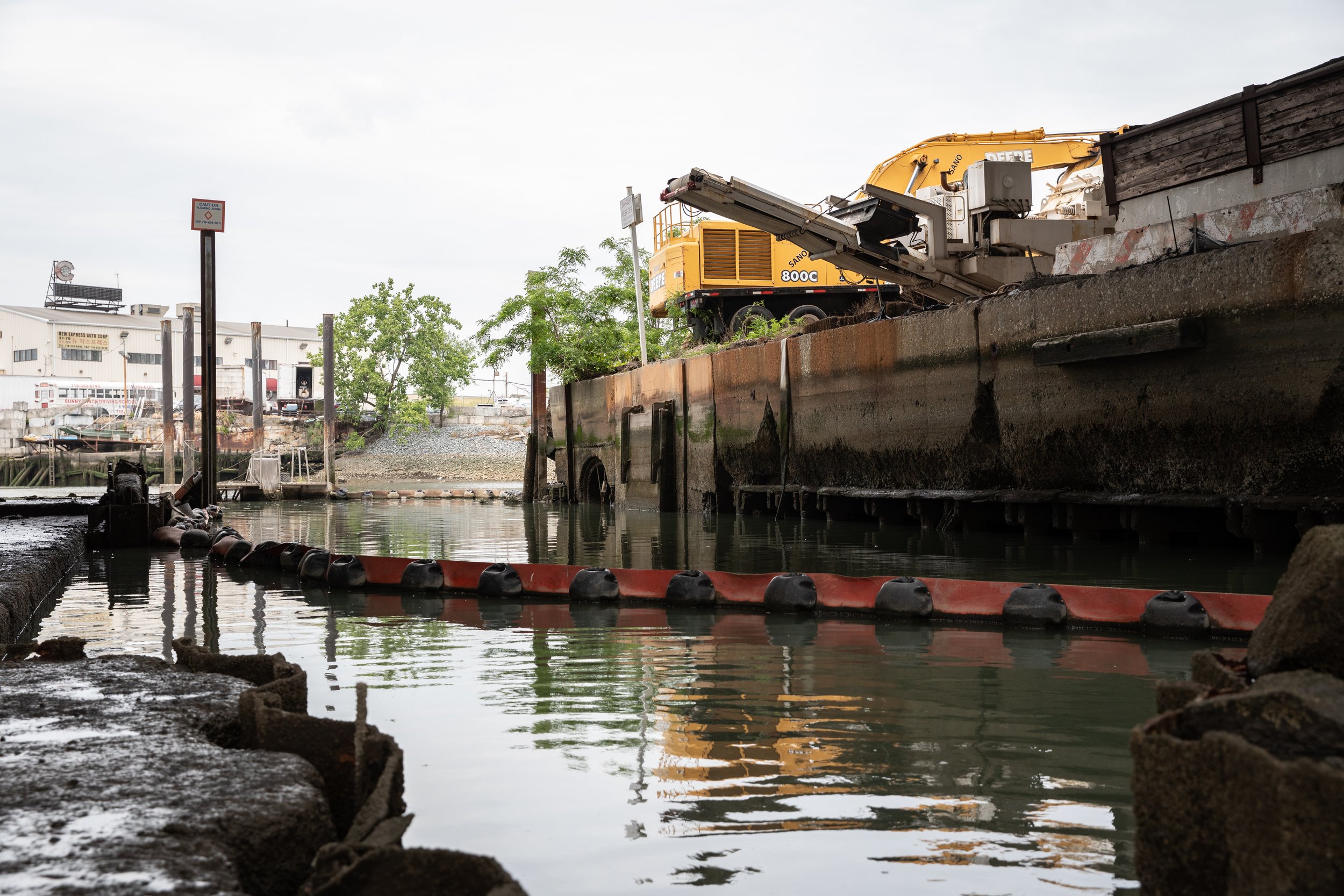
Sewer & Stormwater
Management
The Issues
Combined Sewer Overflow
Most of Flushing Waterways is part of the NYC combined sewer system where the pipes that move our sewage are connected to the pipes that move our storm water. When it rains, the combined system is overwhelmed by rain water and our combined sewer overflow (CSO) pipes discharge the excess sewage and polluted storm water into our waterways without being treated at a wastewater treatment plant.
Each year, Flushing Bay receives 2 billion gallons of raw sewage and polluted rainwater. This onslaught of contamination leaves Flushing Waterways’ ecological communities choked of oxygen and its populous boating community paddling in raw sewage and trash.
“There’s usually stuff floating on top of it. Some is identifiable trash that you’d rather see in a bathroom waste bin.”
-Karen Craddock, Empire Dragon Boat
Separate Sewer System
Unlike combined sewers, “separate sewers” drain rainwater from our roofs, curbs and streets directly to our local waterways without treatment. During rain events, rainwater picks up pollutants like trash, oil, pet waste and sediment and carries them straight to waters. Most of Flushing Meadows Corona Park and parts of College Point are part of this separate system, resulting in increased contaminants flowing into our waterways.
NYC ranks #1 in raw sewage pollution in the country. Learn more about NYC sewage and stormwater issues and their impact on the health of our waterways here.
Our Initiatives
Stormwater Management Advocacy
New York City is required to ensure our waterways are fishable and swimmable. As a member of the Stormwater Infrastructure Matters (SWIM) coalition, GoFB advocates for sewer and stormwater management that centers our local communities and ecologies.
For more information, check out SWIM Coalition and their advocacy for better stormwater infrastructure.
Green Infrastructure development
In Flushing Waterways, it takes only 1/10th of an inch of rain to overwhelm the sewer system and dump raw sewage and contaminated rainwater into our waterways.
While gray infrastructure (holding tanks and tunnels) is an important aspect of CSO management, green infrastructure (green roofs, rain gardens and parks) absorbs rainwater before it overwhelms the system and offers multiple co-benefits to communities. As a member of the RAIN coalition, GoFB maintains green infrastructure and develops green jobs in our watershed.
Check out the RAIN Coalition for more information!
Get Involved
Report Illegal Dumping
If you notice waste flowing from pipes into your local waterbody on a sunny day with no wet weather activity, it’s likely that a sewer line may be directly connected to a CSO pipeline. You can help by reporting illegal dumping from pipes that aren’t CSO pipes to the Department of Environmental Conservation (DEC). Email the DEC or reach out to Riverkeeper where they can help file the report.
Become a green infrastructure steward
NYC Department of Environmental Protection’s sidewalk rain gardens play a critical role in absorbing rainwater before it enters the sewer system. Unfortunately, these rain gardens often fill with trash or debris when not maintained. Do you, your organization or school want to become a rain garden steward in the Flushing Waterways watershed? Contact us to get involved.
Keep in Touch
The best way to stay up to date on Guardians’ events and advocacy work is to sign up for our newsletter.






